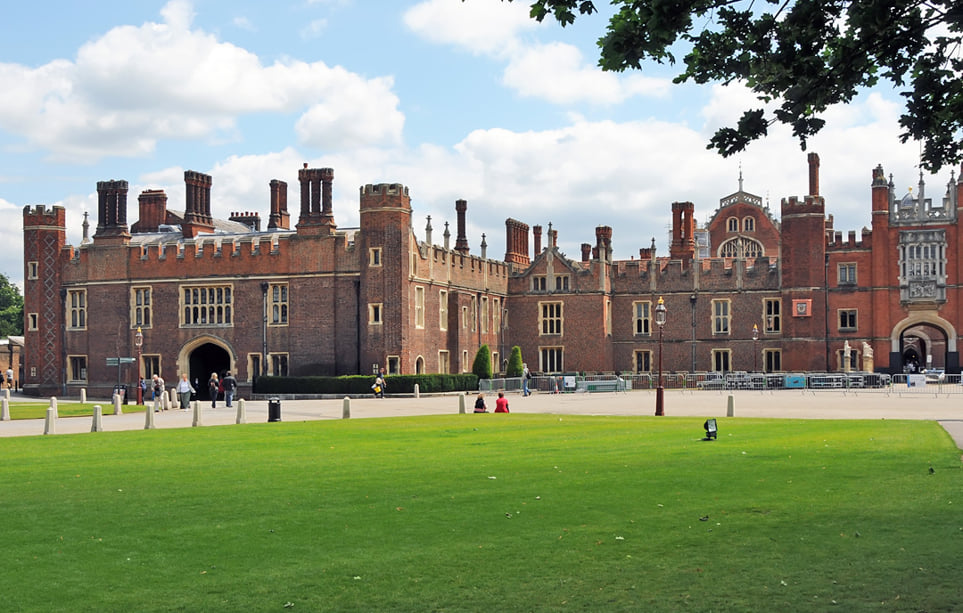Richmond Hampton Planning Permission: A Comprehensive Guide
Planning permission is a critical step for homeowners and developers looking to make alterations or build new structures in Richmond’s Hampton. This scenic and historical area, nestled along the River Thames, has its unique architectural character and conservation areas that demand special attention when planning any construction work. Whether you’re considering a loft conversion, an extension, or a new build, understanding the planning permission process is essential to avoid potential legal issues and ensure your project runs smoothly.
What is Planning Permission?
Planning permission is the formal approval required by your local planning authority, in this case, the Richmond Upon Thames Council, to make changes to a building or construct a new structure. It ensures that development is in line with local and national policies, protecting the character of the area and the environment. Failing to secure proper permission can result in hefty fines or even demolition of unauthorized structures.
Types of Developments That Require Planning Permission
In Richmond Hampton, you’ll need planning permission for several types of projects, including:
- Extensions: Whether you’re adding a single or double-storey extension to your property, planning permission is often required, particularly if your home is in a conservation area.
- Loft Conversions: Converting your loft space into an additional room or suite might need permission, especially if the changes affect the exterior appearance or the volume of the roof space exceeds permitted development rights.
- New Builds: Constructing a new home on a plot of land will require full planning permission, which involves more extensive procedures, including environmental impact assessments and community consultations.
- Change of Use: If you are changing the purpose of a building, such as converting a residential property into a commercial space, planning permission is necessary.
- Conservation Area Projects: Richmond Hampton is home to several conservation areas, where stricter regulations apply to preserve the historic and aesthetic value of buildings. Any significant changes, even small modifications like replacing windows, may need special approval.
How to Apply for Planning Permission in Richmond Hampton
The planning permission process can be broken down into a series of steps:
1. Pre-application Advice
Before submitting your application, it’s recommended to seek pre-application advice from the Richmond Upon Thames planning department. This step helps you understand the likelihood of approval and provides you with valuable insights on how to design your project in a way that meets local planning policies.
2. Submitting Your Application
Once your plans are ready, you can submit them online via the Planning Portal or directly to the Richmond Council. Your application should include:
- Detailed architectural drawings and plans of the proposed project
- A Design and Access Statement, particularly for developments in conservation areas
- Environmental assessments (if applicable)
- A location plan showing the site and its surroundings
The planning application fee will depend on the scale and nature of the project. For smaller projects like home extensions, fees are relatively modest, while larger developments may incur higher costs.
3. Consultation Period
Once submitted, your application enters a consultation period, typically lasting 8-13 weeks. During this time, neighbors, local interest groups, and statutory consultees (such as environmental or heritage agencies) have the opportunity to comment on your proposal.
4. Planning Decision
At the end of the consultation period, the planning officers will assess your application based on local planning policies, including those in the Richmond Local Plan, and broader guidelines like the National Planning Policy Framework (NPPF). The decision will be either:
- Approved: If the project complies with all regulations.
- Approved with Conditions: Permission may be granted but with specific conditions you must follow, such as materials to be used or restricted working hours.
- Refused: If the development does not align with the policies, the application can be rejected. However, you can revise your plans and reapply or appeal the decision.
Planning Considerations in Richmond Hampton
Richmond Hampton is a highly desirable area known for its rich history, stunning architecture, and natural beauty. Due to this, there are several key considerations to bear in mind:
1. Conservation Areas
Many parts of Richmond Hampton fall under conservation areas, which are specially designated to protect the character of historic places. Any development within these zones must preserve or enhance the area’s special architectural or historic interest. For instance, you might face restrictions on the materials you can use, the height of new buildings, and even color schemes.
2. Listed Buildings
Richmond Hampton is home to several listed buildings—structures of special architectural or historical significance. If your property is listed, you’ll need listed building consent in addition to planning permission. This consent ensures that any changes respect the building’s historical value. Even small modifications, like internal changes or repairs, often require approval.
3. Environmental and Flood Risk
Being close to the River Thames, some areas in Richmond Hampton may be prone to flooding. If your property is located within a flood risk zone, you may need to submit a flood risk assessment with your application to demonstrate that your development will not exacerbate flooding in the area.
Permitted Development Rights in Richmond Hampton
In some cases, you may not need full planning permission for your project, thanks to Permitted Development (PD) Rights. These rights allow certain minor works, such as small extensions, outbuildings, or changes to internal layouts, without requiring formal permission. However, in conservation areas, listed buildings, or other specially designated areas, these rights are often limited or removed entirely.
It’s essential to confirm whether your project falls under PD rights by checking with Richmond Council or seeking advice from a planning consultant.
What Happens If You Don’t Obtain Planning Permission?
Proceeding with a development without securing the necessary planning permission is a serious offense and can lead to enforcement action by the council. This might include:
- Demolition: You could be ordered to demolish the unauthorized structure.
- Fines: Substantial fines can be imposed for non-compliance.
- Legal Challenges: Neighbors or local groups may file objections, leading to costly legal disputes.
If you’ve already started work and realize you need permission, you can apply for retrospective planning permission. However, there’s no guarantee it will be granted, and refusal could result in significant losses.
How to Increase the Chances of Approval
To boost the likelihood of your planning permission being approved, consider the following:
- Work with Professionals: Hiring an experienced architects or planning consultant familiar with Richmond Hampton’s local requirements can streamline the process and help you create designs that are more likely to be approved.
- Engage the Community: Involving your neighbors and local interest groups early in the process can help smooth over any potential objections and ensure a more favorable consultation period.
- Respect Local Character: Ensure that your development respects the scale, materials, and design aesthetic of the surrounding buildings, especially if you’re in a conservation area.
Conclusion
Securing planning permission in Richmond Hampton requires careful consideration of local guidelines, particularly with the area’s historical and environmental significance. By understanding the process, consulting with the right professionals, and adhering to local planning policies, you can turn your development dreams into reality. Whether you’re planning a small home extension or a larger new-build project, ensuring that your application is thorough and well-prepared is key to achieving success.
For more detailed guidance, you can always reach out to the Richmond Upon Thames Council Planning Department or hire a local planning consultant familiar with the intricacies of this charming and historically rich area.



No responses yet